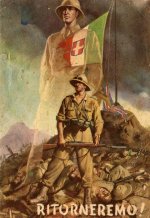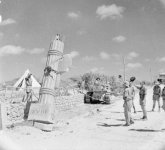In Mankato, Minnesota, a monument bears the name of the thirty-eight Sioux hanged by order of President Abraham Lincoln in 1862. It was the largest public execution in American history.
As the Civil War raged on, the Indian question remained one of the main concerns of the federal government, which, since the beginning of the 19th century, had been pushing its borders further west. The presence of Amerindian peoples constituting an obstacle to this conquest, Washington multiplied the treaties favoring their deportation. In 1852, the Sioux chiefs of Minnesota signed one of these "contracts". In exchange for the cession of their land in the northwest of the country, the government agreed to provide for their needs. They were parked in a reserve along the Minnesota River without any compensation. In 1862, victims of a famine, they sent representatives to the Bureau of Indian Affairs, an administration dedicated to the Amerindian question, to demand food. In wartime, who cared about a handful of starving Indians? The Sioux rose up on August 17, killing a family of five settlers. Anticipating reprisals, the Indian Council immediately voted for war. The next day, hundreds of warriors led by a chief named Little Crow attacked neighboring towns and farms, indiscriminately slaughtering men, women and children. President Lincoln announced the deaths of nearly 800 settlers. As the government was more concerned with the Confederate advance towards the capital, it decided to let local militias deal with the problem. Mistake. Faced with little federal reaction, the Sioux revolt turned into an all-out war.
On September 2, after the battle of Birch Coulee where, once again, the Americans suffered heavy losses, Lincoln finally took stock of the situation. He appointed General John Pope to head a new regiment, the Northwest Department, which had vowed to treat the Sioux "like wild beasts and exterminate them." He kept his word. In twenty days, he put down the uprising. Thousands of Indians were captured and 392 of them tried by a military commission. The verdict was final: 303 death sentences. Charged with ruling on this decision, Lincoln was caught in the crossfire. The president was under pressure from settlers who demanded swift revenge, but, as a representative of a democratic nation, he also had to ensure that justice did not condemn innocent people. After two months of procrastination, on December 11, he reduced the list of convicts to 38 Indians. "He had distinguished those whose participation in the massacres was proven from those who had simply taken part in the battles," said historian Bradley Clampitt. The culprits were hanged in public on December 26, 1862, in Mankato. Four months later, in April 1863, the Sioux people of Minnesota were expelled to Nebraska and South Dakota. As for its reserve, it was dissolved manu militari by Congress.
-Geo-
As the Civil War raged on, the Indian question remained one of the main concerns of the federal government, which, since the beginning of the 19th century, had been pushing its borders further west. The presence of Amerindian peoples constituting an obstacle to this conquest, Washington multiplied the treaties favoring their deportation. In 1852, the Sioux chiefs of Minnesota signed one of these "contracts". In exchange for the cession of their land in the northwest of the country, the government agreed to provide for their needs. They were parked in a reserve along the Minnesota River without any compensation. In 1862, victims of a famine, they sent representatives to the Bureau of Indian Affairs, an administration dedicated to the Amerindian question, to demand food. In wartime, who cared about a handful of starving Indians? The Sioux rose up on August 17, killing a family of five settlers. Anticipating reprisals, the Indian Council immediately voted for war. The next day, hundreds of warriors led by a chief named Little Crow attacked neighboring towns and farms, indiscriminately slaughtering men, women and children. President Lincoln announced the deaths of nearly 800 settlers. As the government was more concerned with the Confederate advance towards the capital, it decided to let local militias deal with the problem. Mistake. Faced with little federal reaction, the Sioux revolt turned into an all-out war.
On September 2, after the battle of Birch Coulee where, once again, the Americans suffered heavy losses, Lincoln finally took stock of the situation. He appointed General John Pope to head a new regiment, the Northwest Department, which had vowed to treat the Sioux "like wild beasts and exterminate them." He kept his word. In twenty days, he put down the uprising. Thousands of Indians were captured and 392 of them tried by a military commission. The verdict was final: 303 death sentences. Charged with ruling on this decision, Lincoln was caught in the crossfire. The president was under pressure from settlers who demanded swift revenge, but, as a representative of a democratic nation, he also had to ensure that justice did not condemn innocent people. After two months of procrastination, on December 11, he reduced the list of convicts to 38 Indians. "He had distinguished those whose participation in the massacres was proven from those who had simply taken part in the battles," said historian Bradley Clampitt. The culprits were hanged in public on December 26, 1862, in Mankato. Four months later, in April 1863, the Sioux people of Minnesota were expelled to Nebraska and South Dakota. As for its reserve, it was dissolved manu militari by Congress.
-Geo-



